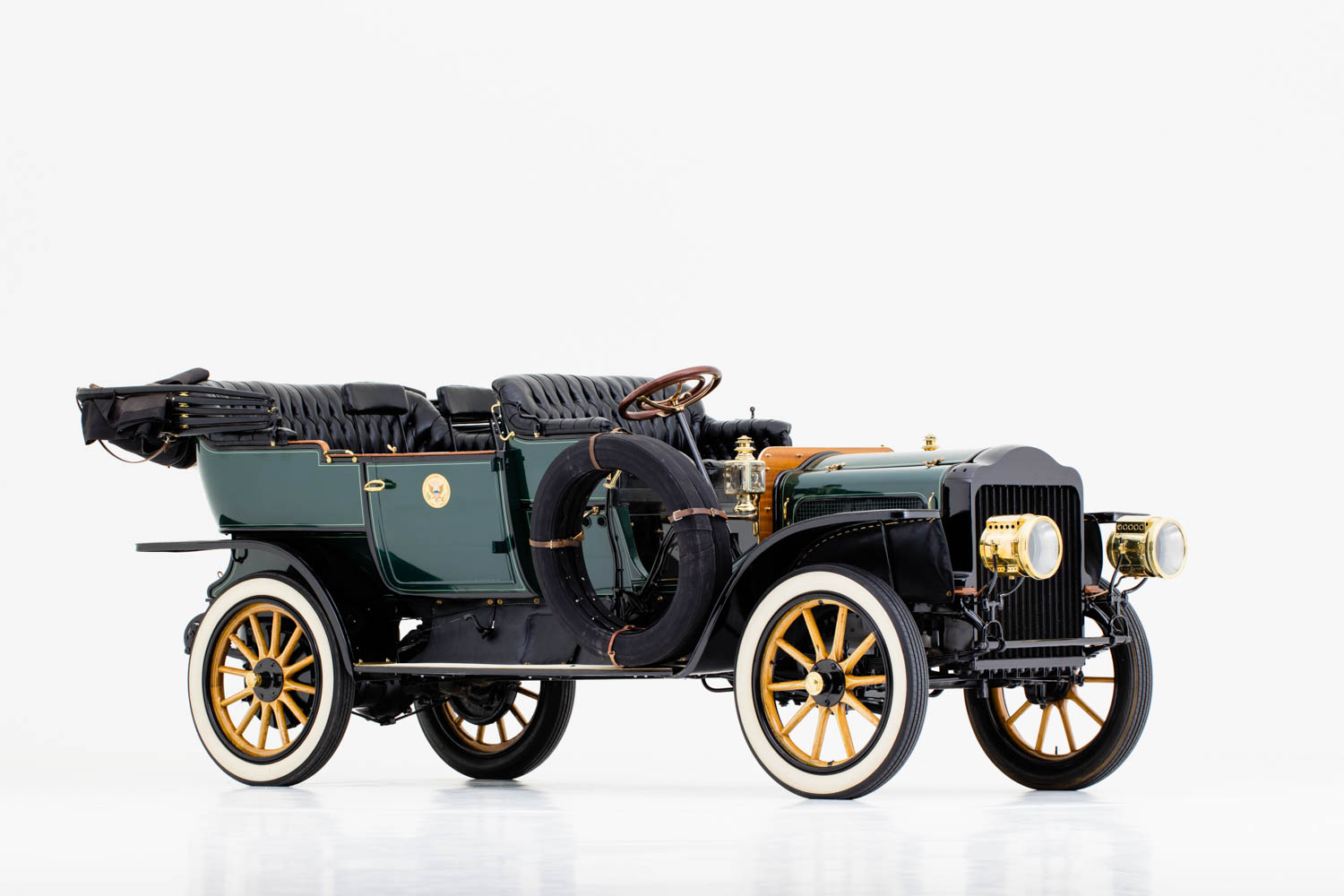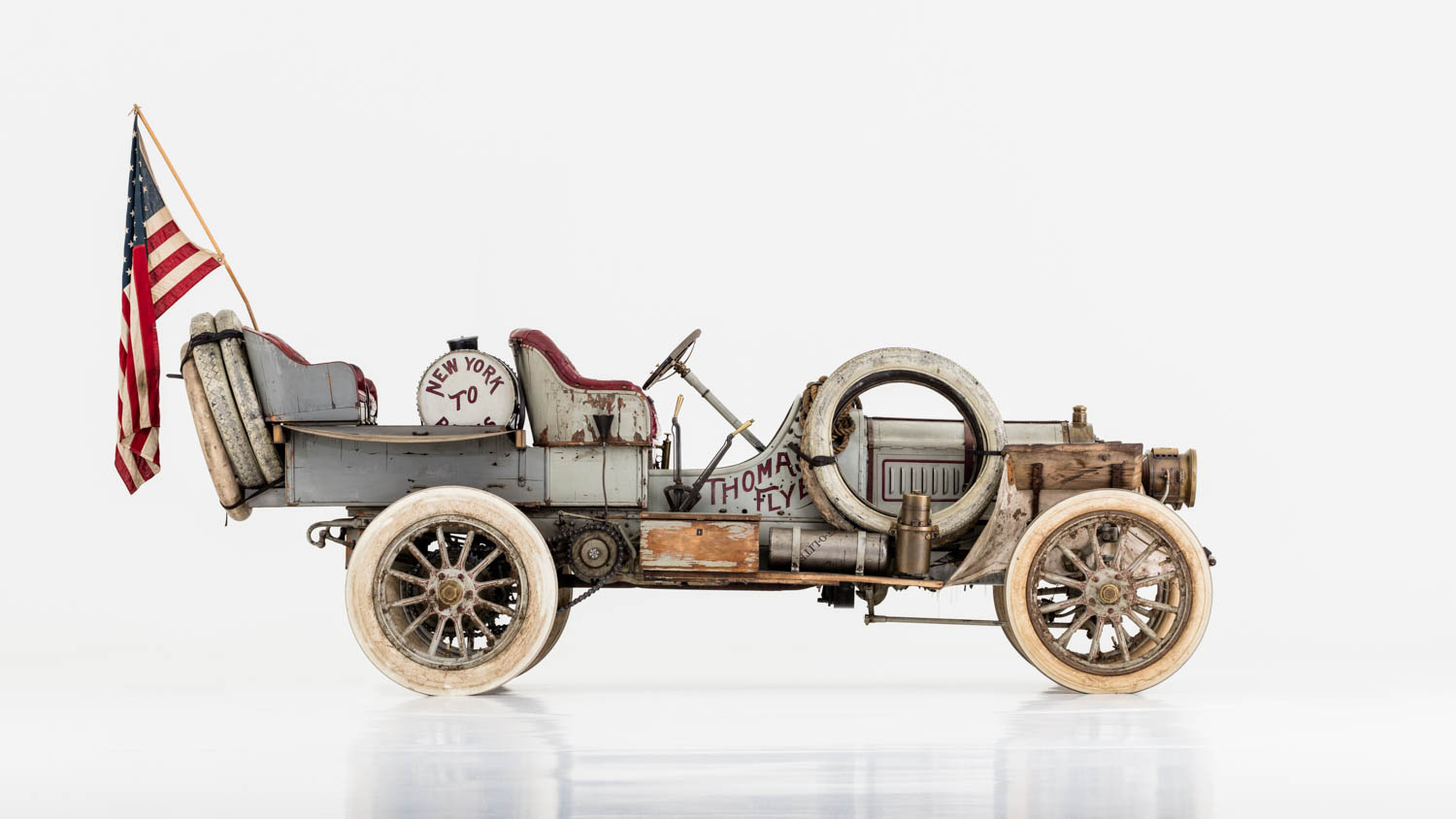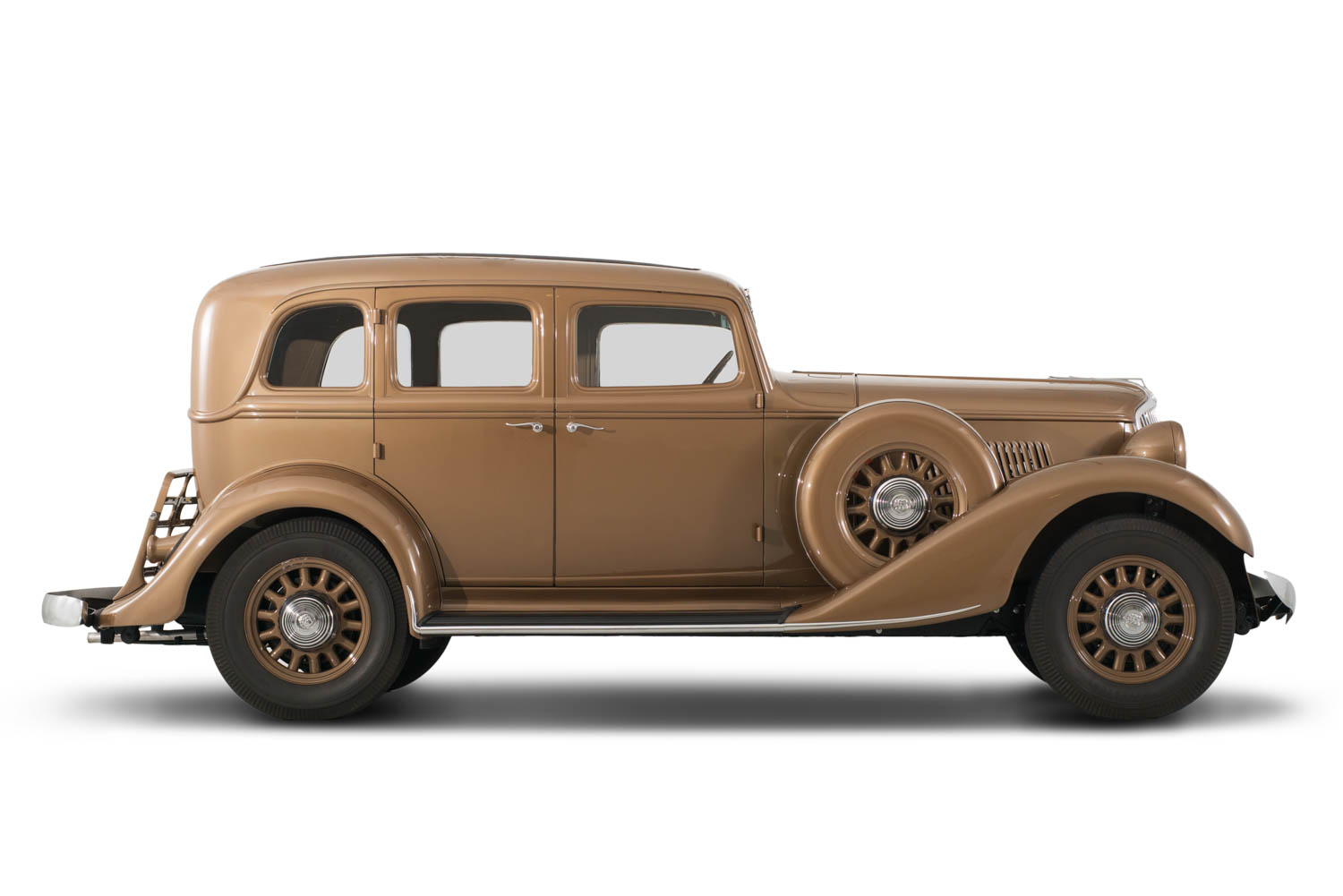Historic Vehicle Association, Senate fight to give historic automobiles their due
There is an equal rights movement afoot in the U.S., and it has nothing to do with gender or race. This one is for automobiles.
Late last month, U.S. Senators Gary Peters (D-Michigan) and Rob Portman (R-Ohio), reintroduced the National Historic Vehicle Register Act, a bipartisan bill to create a register for the preservation of American automotive innovation and history. The bill would require the Department of the Interior to create a Library of Congress-administered register to document historic and significant automobiles, motorcycles, trucks, and commercial vehicles.
When you bear in mind that the National Preservation Act became law in 1966, perhaps you thought the U.S. already had a historic register for automobiles. Think again.
“There are over 130,000 buildings, landscapes, monuments, and ships officially recognized for their historical significance, but no automobiles—not one in 53 years,” says Diane Parker, vice president of the Historic Vehicle Association. “Considering the significant role that automobiles have played in the history of this country, I think most people would be surprised to hear that.
“We believe our automotive heritage should never be lost or forgotten and this kind of legislation will record and protect it in a formal way. We have a lot of catching up to do.”
And Peters and Portman are doing what they can to make that happen.
“Ever since the first cars rolled off the assembly lines, generations of innovative automobiles have helped power our economy and redefine our culture,” says Peters, a Ford Model T owner and a member of the Senate Commerce, Science, and Transportation Committee. “This bill would hold up the American craftsmanship that produced historic motorcycles and cars like the Model T that changed our economy and changed the way we live in such important ways.”
The Historic Vehicle Association sparked the movement in 2013, when it began to collaborate with the U.S. Department of the Interior to recognize and document the country’s most historically significant automobiles, motorcycles, trucks, and commercial vehicles. The first vehicle in the National Historic Vehicle Register, the 1964 Shelby Cobra Daytona Coupe Prototype, was announced in January 2014. Since then, 25 more have been added.
Parker says the proposed National Historic Vehicle Register Act would formalize the process and legitimize the register to the level of the National Register of Historic Places—except the HVA is not asking for federal funding. “We would continue to be a public, privately-funded organization,” Parker says. “We would never try to tell anyone what they can and cannot do with their own vehicle.”
That means what happens to the vehicles is up to their owners. They can be driven, sold, or (yikes) even modified.
The 26 vehicles currently on the National Historic Vehicle Register are associated with a historically significant automotive event or person, or they have significant design/construction or informational value. Should the National Historic Vehicle Register Act become law, the criteria for inclusion will remain the same.
Parker says the stories behind the vehicles are more significant than their momentary value. “Each one has a human-interest story—a great human-interest story—that goes beyond the horsepower,” she says.
The HVA has helped tell those stories through its annual “Cars at the Capital” display in Washington, D.C. In September, the newest vehicles on the National Historic Vehicle Register—Apollo 12 astronaut Alan Bean’s 1969 Chevrolet Corvette and a 1966 Volkswagen Deluxe Station Wagon formerly owned by Civil Rights activists Esau and Janie B. Jenkins—were displayed on the National Mall. Volkswagen was so excited about the selection that it took out a full-page ad in The Washington Post that looked a lot like its iconic “Think Small” advertising campaign in the 1960s.

Parker and her team at the HVA were thrilled with the recognition the ad brought to their cause, but that doesn’t mean the ’66 VW is Parker’s favorite vehicle on the list. “They’re all relevant and unique and diverse, and each one is extraordinary,” she says. “It’s like asking me to pick my favorite child. I love them all for different reasons.”
Senator Peters sponsored a similar bill as a congressman and is optimistic that the National Historic Vehicle Register Act will move forward. It has been read twice to the Senate and was referred to the Committee on Energy and Natural Resources. More information can be found on Senator Peters’ website, as well as the bill’s Congressional information page.
Vehicles already certified by the Historic Vehicle Association, in order of their inclusion:
1964 Shelby Cobra Daytona Coupe CSX2287

Shelby Cobra Daytona Coupe CSX2287 was the prototype racing coupe version of the Shelby Cobra roadster and was built from October 1963–January 1964 to compete against Ferrari in the FIA International Manufacturers’ GT Championship. Based on the efforts of designer Peter Brock, racing director Ken Miles, fabricator John Ohlsen, and chief engineer Phil Remington, CSX2287 raced in eight events in 1964–65 and finished second in the final manufacturer standings. In 1965, Shelby American won the championship. In 1965, CSX2287 was driven to a total of 23 national (United States Auto Club) and international (FIA) land speed records at the Bonneville Salt Flats.
1964 Meyers Manx Old Red

The 1964 Meyers Manx (Old Red) prototype was built in 1963–64 by surfer Bruce Meyers, a boat builder by trade. Utilizing a Volkswagen engine and suspension components, Meyers designed the dune buggy to be lightweight, capable, and stylish. People took to the unique design instantly, and the increasing popularity of recreational vehicles drove demand.
1938 Maserati 8CTF The Boyle Special

The 1938 Maserati 8CTF (serial #3032), known as The Boyle Special, is the most successful automobile to compete in the Indianapolis 500 Mile, winning twice, third twice, and fourth once.
1918 Cadillac U.S. 1257X

The 1918 Cadillac Type 57 (serial #57A704), known also by its U.S. military designation U.S. 1257X, was owned by a Presbyterian minister who brought it with him to France while serving on behalf of the YMCA in World War I. During its service there, the car chauffeured Mrs. Theodore Roosevelt, Jr., who was charged with organizing a significant portion of women’s activities related to the YMCA’s war efforts. It is the only known Cadillac with a service record of its participation in a war.
1947 Tucker 48 Prototype The Tin Goose

The 1947 Tucker ’48 Prototype, known as The Tin Goose, was the first car built by Preston Tucker’s legendary Tucker Corporation, and only 50 production models were produced in ’48. Tuckers were built with innovations like an aerodynamic fastback body style, sophisticated four-wheel independent suspension to improve handling, a powerful engine to enable high-speed travel, and numerous features for passenger safety.
1940 GM Futurliner No. 10

General Motors Corporation (GM) launched the original Parade of Progress traveling road show in 1936 to exhibit free public demonstrations of the scientific and technological achievements of American industry. The first tour of Streamliners drew nearly 9 million people, so GM created a second Parade for 1941, which featured 12 new aerodynamic buses called Futurliners. This one is bus #10.
1954 Mercedes-Benz 300SL

The 1954 Mercedes-Benz Type 300SL coupe was the first mass-produced car built expressly for the American market, and serial #198 040 4500003 was the first 300SL imported to the United States. Known for its unique gullwing doors, it is one of the world’s most legendary collector cars.
1940 Ford Pilot Model GP-No.1 (Pygmy)

The 1940 Ford Pilot Model GP-No. 1, also known as the Pygmy, is one of two prototypes that Ford delivered to the U.S. Army for testing prior to WWII. It has many of the features that were prominent on later production Jeeps that Americans have loved for decades.
1909 White Model M steam car

President William Howard Taft’s 1909 White steam car was the first Presidential Limousine and was used by Taft to actively promote the auto industry.
1962 Willys Jeep CJ-6

The 1962 Willys Jeep Universal CJ-6 was President Ronald Reagan’s personal, recreational, and utility vehicle. It is almost entirely unrestored.
1911 Marmon Wasp

Ray Harroun’s 1911 Marmon Wasp won the first Indianapolis 500 race and is believed to be the first car to utilize a rearview mirror, which eliminated the need for a traditional ride-along mechanic/spotter.
1907 Thomas Flyer

The 1907 Thomas Flyer won the first transcontinental auto race, an epic 169-day, 22,000-mile journey that began in New York, traversed Canada, Russia, and Europe, and finished in Paris in 1908.
1906 Anderson Six convertible

A product of South Carolina’s first automobile company, which operated from 1916–22, the Anderson Six is one of only seven known survivors. The 1920 Anderson, featuring hickory wood trim from its home state, was the first automobile to be added to the National Historic Vehicle Register for its local and regional historic significance.
Buick Y-Job

One of the first concept vehicles built by General Motors—under the direction of company’s first design chief, Harley Earl—the 1938 Y-Job set the tone for GM designs for the next decade.
1967 Chevrolet Camaro

The first Camaro built, VIN #123377N100001 represents the intense battle of American automakers in the 1960s to build performance-inspired, youthful, economical cars known as “pony cars.” The Camaro’s basic design theme continues today.
1932 Ford Roadster (McGee Roadster)

Arguably the most iconic of all hot rods, the 1932 Ford afforded the strongest frame and components, the most powerful engine for the money, and the best overall style. In 1947, Bob McGee transformed his ’32 Roadster and set the tone for custom builds to come.
1951 Mercury Sport Coupe (Hirohata Merc)

In 1952, fresh out of the Navy and eager to cruise Los Angeles in a full-blown custom, Masato (Bob) Hirohata located a 1951 Mercury Coupe and took the car to the leading shop at the time, Barris Kustoms. The rest, as they say, is history. From its “Frenched” headlamps and custom grille to its 1952 Buick side trim, nothing was left unaltered.
1964 Chevrolet Impala (Gypsy Rose)

Created by Jesse Valdez, Gypsy Rose is perhaps the best-known lowrider ever built. Actually the third Gypsy Rose created, the 1964 Impala was the vision of Valdez and painter Walt Prey, who (with Don Heckman) took inspiration from a Mexican restaurant in Los Angeles. It is believed that more than 20 gallons of lacquer was used to protect the Gypsy Rose’s elaborate paint job.
1933 Graham 8 Blue Streak

The idea of streamlining airflow over the car to improve gas mileage and speed had been around since the early 1900s, but it wasn’t until the early 1930s that designers and engineers started to experiment and gradually embrace streamlining principals. Graham put it all together with Blue Streak, and its design proved to be a tipping point in automotive design.
1896 Benton Harbor Motor Carriage

One of the earliest American horseless carriages, the Benton Harbor Motor Carriage was created by the Baushke brothers of Benton Harbor, Michigan, and William O. Worth, an engine builder and inventor from Chicago. Motivated to build a car to compete in the 1895 Chicago Times-Herald “Motocycle” Competition, the trio didn’t finish the car in time for the event. After completing construction of this single vehicle the following year, the three parted ways.
1968 Ford Mustang Fastback (Bullitt)

Perhaps the most famous movie car from the most famous chase scene in film history, much has written about the 1968 Ford Mustang that Steve McQueen drove in Bullitt. It is expected to become the most expensive Mustang ever sold at auction when it crosses the block in January 2020.
1985 Modena Spyder Ferris Bueller Ferrari

The first replica on the Historic Register, the 1985 Modena Spyder is often thought to have been created for its role in Ferris Bueller’s Day Off, but it actually came before the movie. In 1984, Mark Goyette and Neil Glassmoyer built a one-off fiberglass replica of a Ferrari 250GT California (1957–63) for a customer and planned to use it to launch a business building similar cars. Before they had a chance, however, Hollywood director John Hughes got wind of the car and asked to use it in his upcoming movie, since a real 250GT would be too expensive to rent. The car is now a pop culture icon.
1927 Model T Touring

The 15-millionth Model T built, the 1927 Touring represents the end of the Model T’s historic 19-year production run. Henry and Edsel Ford drove the car—hand-stamped VIN 15000000—off the Highland Park assembly line on May 26, 1927.
1984 Plymouth Voyager

The first Chrysler minivan rolled off the production line on November 2nd, 1983, exactly five years to the day after Lee Iacocca took the post as CEO of the then-failing Detroit automaker. The new family-style vehicle was more than a fad; it became an American staple.
1969 Chevrolet Corvette Stingray

Leased for $1 by Apollo 12 astronaut Alan Bean, through a special program offered by Florida car dealer Jim Rathmann, the gold and black Corvette carries a red-white-blue plaque to commemorate the lunar mission, in which Bean became the fourth person to walk on the moon. Of the three custom 390-horsepower 427 Stingray coupes ordered by the Apollo 12 crew, only Bean’s survives.
1966 Volkswagen Type 2 Station Wagon

The 1966 Volkswagen Deluxe Station Wagon is no ordinary microbus. It was originally owned by Esau and Janie B. Jenkins, Civil Rights pioneers who dedicated their lives to the people of Johns Island, South Carolina, and beyond. The back hatch of the bus, which now resides in the Smithsonian National Museum of African American History and Culture in Washington D.C., still wears a painted slogan that captures exactly what the Jenkins family was all about: “Love is Progress, Hate is Expensive.”

